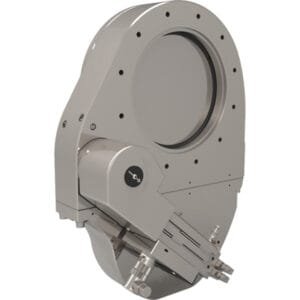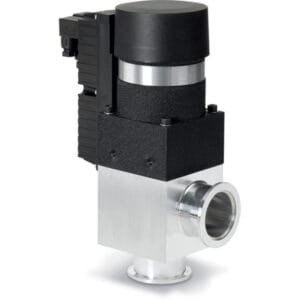DN125CF (6.75 OD) 316LN SS Standard ConFlat® (CF) UHV Flanges
Overview:
The DN125CF (6.75 OD) 316LN SS Standard ConFlat® (CF) UHV Flanges are precision-engineered for ultra-high vacuum (UHV) applications, providing robust performance in critical environments. Made from 316LN stainless steel, these flanges offer superior strength, excellent corrosion resistance, and reliable sealing. They are essential components in vacuum systems where maintaining stable UHV conditions is crucial, such as in semiconductor manufacturing, scientific research, and industrial applications.
Product Features:
Material: Constructed from high-quality 316LN stainless steel, ensuring excellent corrosion resistance and high mechanical strength, making them ideal for UHV applications.
Outer Diameter (OD): 6.75 inches
Flange Type: Standard ConFlat® (CF) flange, known for its precise, leak-proof sealing capability in UHV environments.
Vacuum Rating: Designed to perform reliably under ultra-high vacuum conditions, supporting systems with very low pressures.
Sealing Compatibility: Compatible with copper or metal seals to create a secure and hermetically sealed connection.
Finish: Precision-machined surfaces for smooth and clean finishes, reducing outgassing and improving long-term performance in UHV systems.
Configuration Options: Available in both rotatable and fixed versions for greater flexibility in installation and alignment.
Applications:
Semiconductor Industry: Used in UHV chambers for thin film deposition, etching, and other semiconductor processes, where precise and reliable vacuum conditions are critical.
Scientific Research: Ideal for use in research facilities requiring UHV environments for experiments and vacuum-based studies.
Aerospace: Used in aerospace and space-related applications, such as vacuum systems for satellite construction and testing.
Vacuum Furnaces and Coating Systems: Suitable for applications where stable UHV conditions are necessary for manufacturing or coating processes.
Industrial Vacuum Systems: Essential for vacuum systems in industries such as metallurgy, electronics, and optics that require high-performance, leak-free sealing.
Advantages:
High-Quality Construction: 316LN stainless steel provides enhanced corrosion resistance and durability, ensuring the flanges perform well even in challenging UHV conditions.
Leak-Free Sealing: The precision machining and high-quality sealing materials (copper or metal) guarantee tight, leak-free connections, even in the most demanding environments.
Versatility: Available in both rotatable and fixed configurations, these flanges are suitable for a wide range of vacuum systems and configurations.
Long-Term Reliability: Designed to maintain consistent performance over long periods, ensuring reliable operation in UHV conditions.
Wide Application Range: Ideal for industries ranging from semiconductor manufacturing to scientific research, offering flexibility in various UHV applications.
Manufacturing Process:
These DN125CF flanges are cold-pressed, sintered, and elastomer-bonded to maintain high-density, uniform structure. They are rigorously cleaned and packaged to ensure that they meet the strictest vacuum requirements upon delivery. TFM ensures that the flanges are ready for use in high-demand UHV environments.
Ordering Table
| Flange Size/OD | Type | Flange Material | Part Number |
| Fixed | 316LN SS | 316LN SS | F0675N000NLN |
| Fixed Tapped | 316LN SS | 316LN SS | F0675N000NMLN |
| Rotatable Tapped | 316LN SS | 316LN SS | F0675N000RMLN |





Reviews
There are no reviews yet.